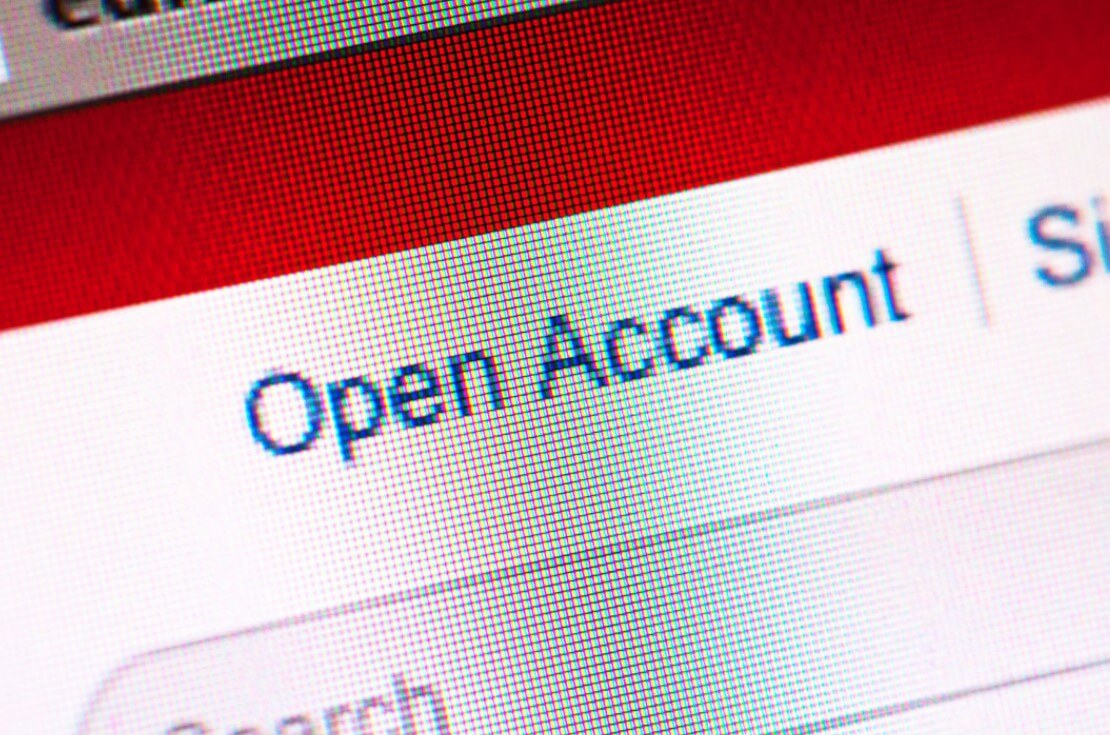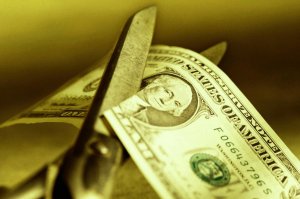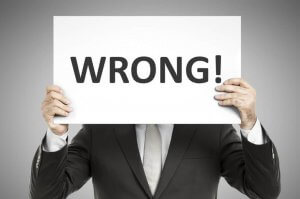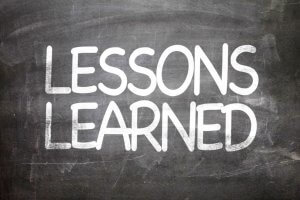Although some Forex brokers will allow you to start trading with just USD 1, you will need to deposit at least USD 20 with a broker offering nano lots or USD 150 with a broker offering micro lots to be able to trade safely during the day.
Strategy for Risk Management
To trade in Forex effectively, you need a Forex broker. Trying to trade in Forex using a normal bank account or money changer is too costly and slow to be a realistic option. Therefore, the starting point to answer this question is, what is the minimum deposit required by a Forex broker?
How much do you need to invest to start trading in the currency market? Forex brokers will not let you trade real money until you have deposited your minimum required deposit, which is usually around $100 these days. However, there are Forex brokers that do not require a minimum deposit, so theoretically you could start trading in Forex with just $1. Unfortunately, if you try to trade in Forex with such a small capital, you will quickly have several problems, starting with minimal position sizes and maximum leverage.
Minimum Position Size and Maximum Leverage
Many Forex brokers will not allow you to execute a transaction of less than 1 micro lot size (0.01 lots) worth 1,000 units of the base currency. For example, 1 micro-batch of the EUR/USD currency pair is worth 1,000 dollars. This means that you will need leverage to perform any transaction in the EUR/USD currency pair with an investment of less than 1,000 USD. If a broker offers maximum leverage of 1:30, typical in Europe, you will need to make an income of at least $33.50 just to make a transaction in EUR/USD. If a maximum leverage of 50 to 1 (typical in the United States) is offered, you will need to deposit at least 20 USD to perform a transaction in EUR/USD. If a maximum leverage of 500 to 1 is offered (typical in Australia), you will need to deposit at least $2 to perform a transaction in EUR/USD.
Just because you’re offered a lot of leverage as a trader, doesn’t mean it’s wise to use it. The minimum deposit that is necessary to make a single Forex transaction is determined by:
-The greater leverage your Forex broker offers you in what you want to trade (leverage is different from asset to asset and from country to country);
-The minimum size of the position you can trade with your broker on what you want to trade (usually 1 micro lot).
There are some Forex brokers that allow trading in a minimum position size even less than 1 micro lot. This lower size is 1 nano batch, which is equal to 0.001 lots. Continuing with our example of placing a transaction in the EUR/USD currency pair, 1 nano lot would equal a cash position size of 100 dollars, so with leverage of 100 to 1, a deposit of 1 dollar would be enough margin to open that transaction.
Forex Brokers Offering Nano Batch Trading
There are several brokers that offer trading nano lots, and they allow you to place an operation with a position size as low as 1 USD or 1 unit of any other base currency, which means you can trade with 1 USD without using any leverage.
So far, we have only considered the limitations imposed by the broker that affect the amount of money you need to start trading in Forex. We still have to consider the issues of risk management, stop loss, meaning benefits, and different negotiating styles, which are key factors to answer this question.
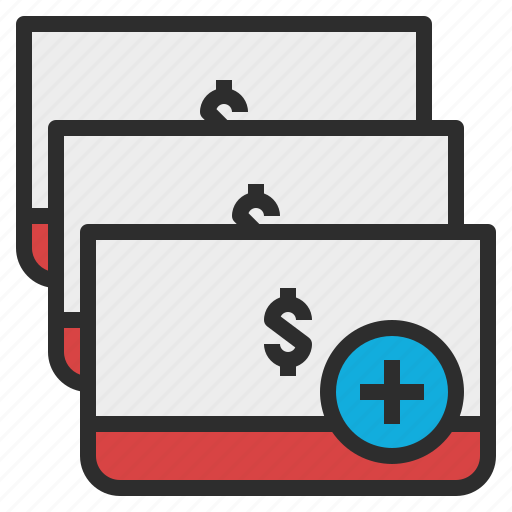 How Risk Management Affects the Repository Size
How Risk Management Affects the Repository Size
We have seen before the minimum amount of money needed to enter a single trade. However, trading Forex involves taking a large number of trades. Even a position operator that could aspire to be in the winning trades for a long period of weeks or months you should probably perform at least fifteen trades for a year; and short-term operators, such as swing traders or scalpers, a lot more operations than that.
Trading in foreign exchange involves losing operations. There is virtually no way around it: any trader, even the best Forex trader, will lose at least one-third of all trades they make. We all know what to win and lose operations are not evenly distributed: markets tend to go through winning and losing streaks. This means that each operator should plan for the worst-case scenario a losing streak of at least 20 losing operations in a row. Each operator must also plan its worst drop (decrease of bill from peak to valley). Once the account has dropped by more than 20%, it becomes increasingly difficult to return to the top, because the profit required to achieve it increases exponentially. For example, if your account has dropped 50%, you need to earn 100% of what’s left to resume the point where you were prior to the loss of 50.
Suppose you don’t want your trading account to drop more than 20% and your worst loss run will probably be 20 losing operations in a row. This means you should not risk more than 1% of your account per operation. But wait, you may only lose 20 trades in a row, but your net loss trades within any major downsizing are likely to be roughly double, with some winners mixed up. This means you probably shouldn’t risk more than 0.5% of your account in a single operation. So, if you’re going to need, because of the minimum position size, leverage, and stop-loss requirements, let’s say $1 for a single operation, you’ll have to multiply it by 200 to reach the minimum amount you need to trade in Forex. You’ll also need to think about the size of your typical stop-loss operation.
Traders must worry about a sudden and wild price movement that causes a massive slide beyond the loss of a trade. This usually occurs only with fixed or currency that can be manipulated, such as the Swiss franc in 2015. This is another reason why it is a good idea to risk only a small part of your account in a single operation. It should also help to trade with major liquid currencies such as the US dollar, the Euro, and the Japanese yen.
How Stop Loss Affects Tank Size
You should never enter an operation without introducing a hard stop loss. The loss of hard stop orders your runner to at the time when the trade has gone against you for a certain amount, close the operation immediately. Although stop loss will not be executed exactly at the price determined when the markets are very volatile, it is the best and very effective way to limit your risk and have control of losses.
The stop loss must always be determined by technical analysis, not by the magnitude of the stop loss you can “afford” because of the amount of money you have in your trading account.
For example, let’s say you want to risk 0.5% of your account on an operation and want your typical stop loss to be 100 pips. The smallest size of trading position your broker allows is 1 micro lot, which in a USD based currency costs 0.10 dollars per pip. This means that your stop loss of 100 pips will require you to risk 100 X 0.10 dollars, which is equivalent to 10 dollars. You want this 1 USD to be no more than 0.5% of your account – and that means you’ll have to make a $2,000 deposit to start trading in Forex with enough money to make the 100 pip stop loss work if your broker only size as micro-batches.
Never make a stop loss smaller than you really want it to be just because you can’t “pay” it with the size of your account. Put more money into your account, find a Forex broker that allows you to trade nano lots, or thinking about changing to another style of trade that typically requires tighter loss stops. The three traditional Forex trading styles are position trading, scalping, and swing trading, and we will consider them each in turn.
How much money do I need to operate in a Forex position?
Position traders look for trades that take several days or even weeks or months to complete, and therefore normally need to use stop losses of about 100 to 150 pips. Assuming that you don’t want to risk more than 0.5% of your account on any transaction and that you will never lose more than 25% of your account, you should start by depositing at least 2,500 USD to 3.750 USD on a Forex broker offering micro-batch trading, or at least $250 to $375 on a Forex broker offering nano lots.

How much money do I need to trade in Forex?
Swing operators search for operations that take one to eight days to complete, and therefore usually need to use stop losses of 30 to 60 pips. Assuming that you don’t want to risk more than 0.5% of your account on any transaction, and that you will never lose more than 25% of your account, you should start with a deposit of at least 700 USD to 1400 USD on a Forex broker that offers micro-batch trading, or at least 70 USD to 140 USD on a Forex broker offering nano lots.
How much money do I need for the Scalp or the Day Trade Forex?
Climbers or day traders look for operations that take only seconds, minutes, or maybe a few hours at most to complete, and therefore usually need to use stop losses of about 5 to 10 pips. Assuming that you don’t want to risk more than 0.5% of your account on any transaction, and that you will never lose more than 25% of your account, you should start with a deposit of at least 120 USD to 240 USD on a Forex broker offering micro-batch trading, or at least 12 USD to 24 USD on a Forex broker offering nano lots.
Can I start with 100 bucks?
The above calculations show that it is absolutely possible to trade in Forex safely starting with an initial deposit of 100 dollars, if you use a Forex broker that offers nano lots or smaller, and is operating in the day, in scalping or swing trading.
Is it worth trading in Forex with a low minimum deposit?
One last thing to keep in mind is, even if you can safely trade in Forex with a small amount of money like $50 or $100, is it worth it? It all depends on what these sums of money mean to you and how much time and effort you will invest in Forex trading.
For example, let’s say you’re able to double your investment in a year. This is a great result for any merchant and will probably require a lot of work. However, if you start with $100, you’ll only get $200 after this big score. It may not be is worth it if you are able to save that amount of money by making a series of changes in your life (for example saving more) without risking your capital. It may be smarter to wait until you have a larger amount to start with because then that benefit would make more sense to you and you would feel worth the work you’ve done to get it.
No one should ever trade in Forex with money they can’t afford to have losses, but normally you won’t be motivated for too long if you trade with too little money and for you, you don’t feel you care much about the outcome. You need to find a balance that works for your negotiating style, emotional style, and financial situation.

